|
Alpine Europe
Milan Info & Gallery
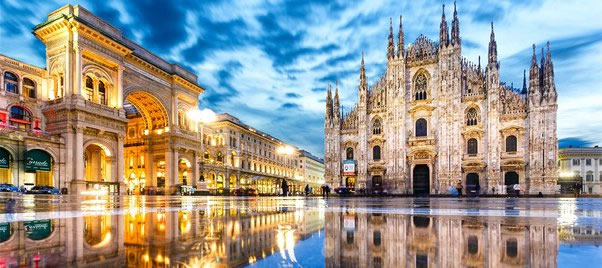
City of Milan, Italy
Italy’s second largest city is where old meets new, and where modern
Italian fashion, design and food are on show to the world. Milan’s
historic center is found in the area around the Piazza del
Duomo. This magnificent Gothic cathedral dominates the
city skyline and is an emblem of Milan.
From here, the streets radiate out and you’ll find the epicenter
of Italian fashion on the Via Montenapoleone in the Quadrilatero
d’Oro. Walk through the Brera district
and on to Parco Sempione where the Castello Sforzesco
is home to countless Renaissance (without the crowds you’ll find
in Rome or Florence). And of course, Milan was home to Leonardo
da Vinci. The master left his mark throughout the city
– from the canals of the Navigli district to the Duomo itself.
Milan is for history and art lovers, foodies and shoppers. While
it doesn’t have the immediate beauty of some of Italy’s other famous
cities, it makes up for it with fresh takes on old traditions. Milan
is where you’ll find modern Italy – looking to the future but always
paying respect to her glorious past.
MILAN SIGHTSEEING OPPORTUNITIES
Daylight Sightseeing Ideas -
The extraordinary location of the Hotel Cavour allows guests to
combine the pleasures of shopping with those of admiring art and
architecture. This world renowned high fashion shopping area, the
so-called “Quadrilatero della Moda” – centering
around Via Montenapoleone, Via Manzoni, Via Della Spiga and Corso
Venezia – is a truly unique “shopping experience.” Other nearby
areas: Via Brera, Via Solferino, Corso Garibaldi and Corso Como,
with boutiques and refined home decor objects, designer shops and
custom tailoring ateliers. For art lovers, we recommend a visit
to the Pinacoteca di Brera, the Museo Poldi
Pezzoli, and the famous Teatro alla Scala,
all just a short walk from the hotel. For science and nature enthusiasts,
don't miss visiting the Museum of Natural History,
the Civic Acquarium and a stroll through the beautiful
Public Gardens, dating back to the lates 1700s.
Evening Sightseeing Ideas
A walk through the traditional street of Brera, the 'luxury Bohemian'
area, with its warm atmosphere and the nigh-spots with live music,
will fascinate and charm you, just like Corso Como, a pedestrian
area full of night life.
Don't miss the evocative walk leading from Via Manzoni to La Scala
which then reaches Galleria Vittorio Emanuele full
of shops before leading you to the walls of the Castello
Sforzesco.
| THE DUOMO
- This is the main religious monument in the city and the
largest building which Gothic architecture erected in Italy.
Situated in Piazza del Duomo, the geometric centre of Milan,
it covers 11,500 square metres, is 158 metres long and 93
metres wide; it is topped by countless spires, the tallest
being 109 metres. Its construction started in 1386, during
the reign of Gian Galeazzo Visconti (the architect who designed
it is unknown) and continued until the 19th century. A succession
of Lombard, Campionese, French and German maestri acted as
director of works. |
 |
| THE
CASTELLO SFORZESCO - Originally founded by the Viscontis
in the 14th century, it was called Castello di Porta Giovia
(the Giovia Gate Castle) and was immediately outside the medieval
walls. After its partial destruction during the ‘Repubblica
Aurea’ (1447-50), it was rebuilt by Francesco Sforza as his
residence. The castle continued to undergo refurbishment and
extension work at every change of regime – firstly under Ludovico
il Moro until 1499 and then, later, under Spanish dominion
halfway through the 16th century, through to the French in
the 19th century. Today, the appearance of the castle is the
result of the most important renovation work – that of Luca
Beltrami, between the 19th and 20th centuries, which reinvented
the fortress with significant additions and changes. |
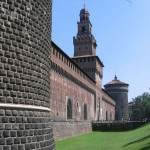
|
GALLERIA
VITTORIO EMANUELE - The Gallery has been defined
as the ‘Drawing-room of Milan’ and connects Piazza del Duomo
with Piazza della Scala. It was created by G. Mengoni between
1865 and 1877 in the shape of a cross with a central octagon
and glass and iron covering. It is the traditional meeting
place for the Milanese and is considered one of the most important
architectural creations of 19th century Milan. |
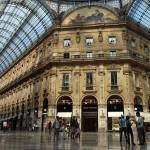 |
PALAZZO
REALE - The splendid building that is the Palazzo
Reale, the ancient palace of the rulers of Milan, is located
right in the heart of the city, next to the Duomo. Its ancient
history, elegant architecture and central location make it
particularly suitable for staging temporary exhibitions of
great interest, organized in its prestigious frescoed and
stuccoed halls. Palazzo Reale is a a cultural center in the
heart of the city, coordinated with three other exhibition
centers: the Rotonda della Besana, Palazzo della Regione and
Palazzo dell’Arengario. |
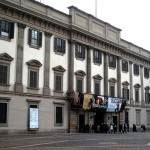
|
| CHURCH
OF SANTA MARIA DELLE GRAZIE - One of the most beautiful
churches of the Renaissance period: built between 1466 and
1490 in in Gothic-Lombard architecture by G. Solari and later
modified by Bramante, who designed the apse, shaped in the
form of a large cube with three angles, and the polygonal
lantern gallery. The interior, with three naves, owes its
charm to the Renaissance gallery by Bramante, surmounted by
a white cupola formed by four grand arches and embellished
with decorative engravings. The gallery leads to the chapel,
also by Bramante, surrounded by a portico. |
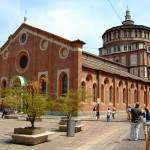 |
| CHURCH
OF SANT'AMBROGIO - Founded in 379 by Saint Ambrose
himself, protector of Milan, as the "Basilica Martyrum"
(Basilica of the martyrs), since it housed the remains of
Saints Gervasio and Protasio. The Bishop himself was buried
there after his death, on Easter Day in the year 397 AD. The
original church was repeatedly renovated over the centuries,
modifying its initial austere appearance with three naves,
as a new presbytery and new apse followed the construction
of a second bell tower by the tenth century. In 1126, a collapse
of the building obliged large scale interventions and adaptations
that continued on in later centuries, until the nineteenth
century "restoration" work which, in an attempt
to bring back the church's appearance before the collapse
of 1196, ultimately had a significant effect on the Basilica's
final representation. |
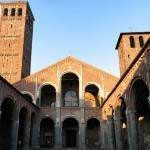 |
Top Of Page
|








